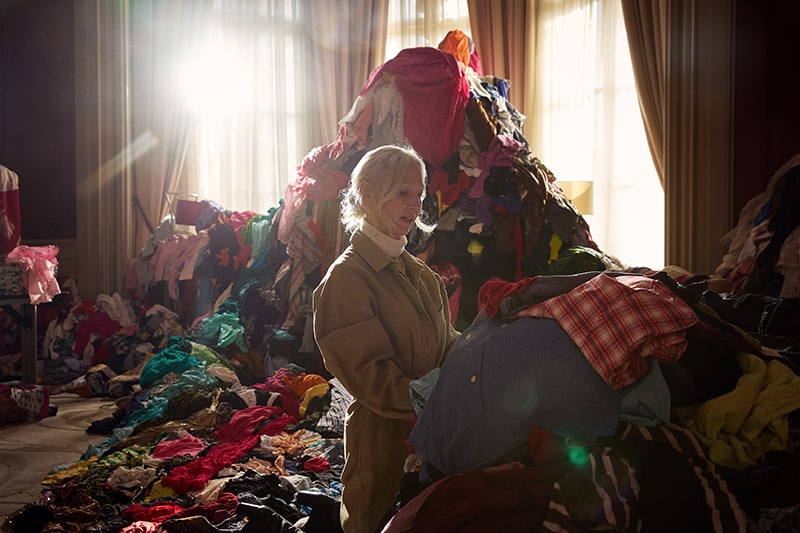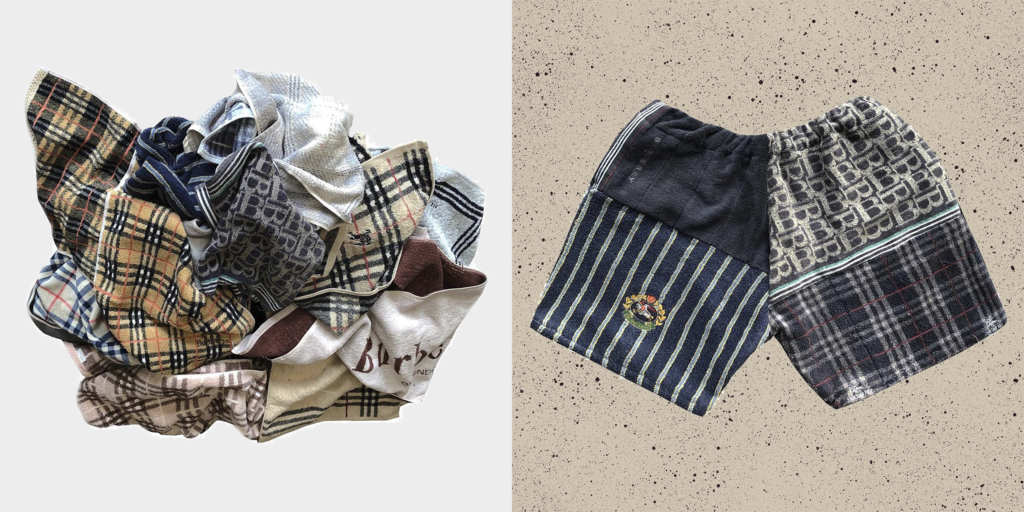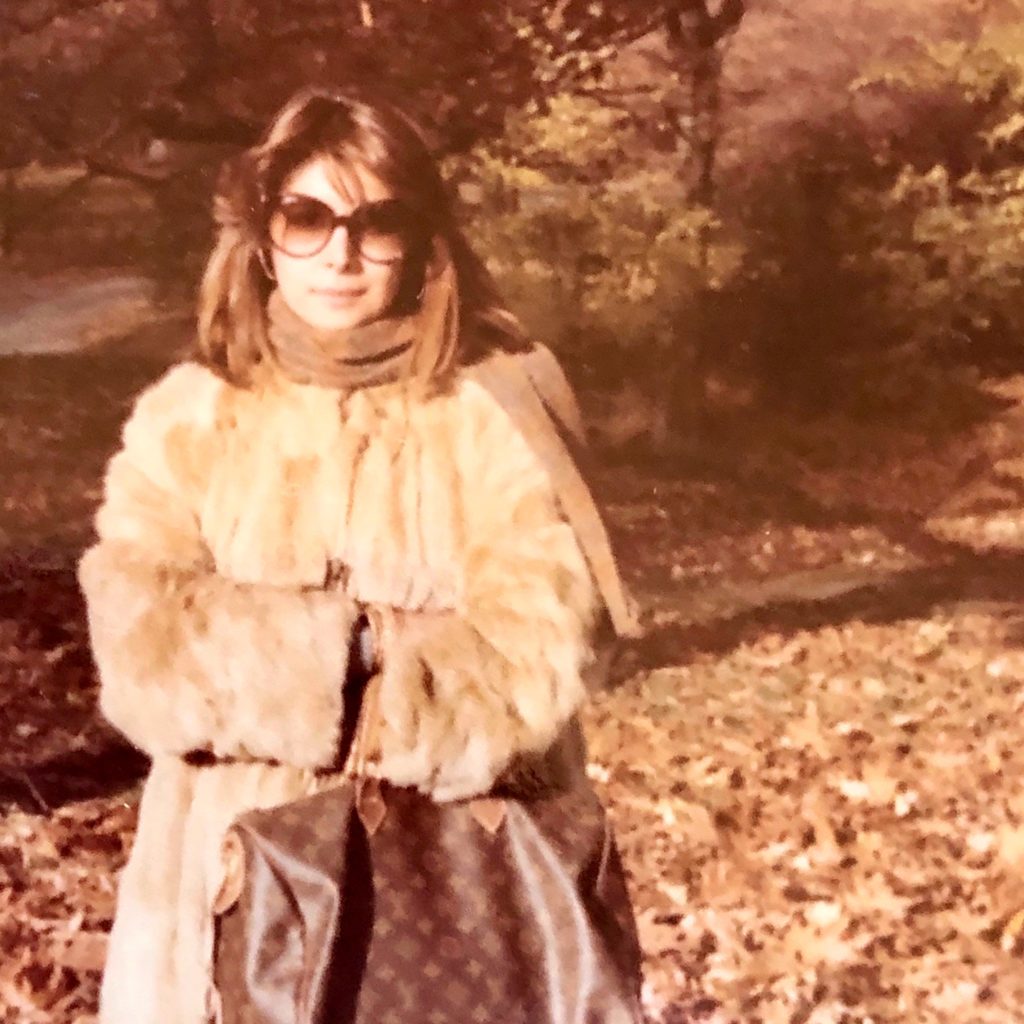Dr. Anna Brismar’s concept of circular fashion explained

If we ignore TikTok’s recent obsession with Shein, the internet has seen a rigorous shift to support sustainable, ethical and circular fashion.
While many industries have been pushed to work in a more sustainable way, the fashion industry has been of particular focus thanks to the many, recurring, humanitarian and environmental issues prevalent in the field. While there have been improvements and many promises to remedy the myriad of problems, unfortunately, this sustainable shift may simply be too little too late.
The fashion industry can’t merely plaster over their wrongs to fix this issue. They need a complete restructuring. And it isn’t as though they don’t know how to do this. There is hope – and a plan. A very well thought out plan with pretty much a step by step guide included. The plan was offered up by Dr. Anna Brismar, and she’s had the idea published since 2014 – it just seems to be falling on deaf ears.
Dr. Anna Brismar’s concept of circular fashion comes as an off-shoot to the circular economy concept – an economic system aimed at minimising waste and making the most of resources. Dr Brismar applied this economic idea to the fashion industry – and voila, circular fashion was born.
So what exactly is circular fashion? The first page of Google shares some confusing fashion designer jargon that’s barely readable, let alone understandable. So let’s break it down, starting with the definition from the concepts creator herself;
“It can be defined as clothes, shoes or accessories that are designed, sourced, produced and provided with the intention to be used and circulated responsibly and effectively in society for as long as possible in their most valuable form, and hereafter return safely to the biosphere when no longer of human use.” – Dr. Anna Brismar

Circular fashion means that every part of the life span of a garment is cyclical (works in a cycle). This cyclical system means that items like clothing are produced in a more considerable way and thought is taken not only for the production of an item, but also for what will happen to it at the end of its life – both beginning and end are equally as important.
The core of this system is knowledge. Without the ability to know, for example, where things come from, what they are made of, and who made them, we can’t hold brands accountable for the overall lifecycle of our clothing. The circulatory system considers materials and production thoughtfully, allowing one garment to be utilized for as long as possible and then going one step further to repurpose it into something else.
The focus is on keeping materials out of landfill for as long as possible, if not all together. The cycle starts with designing out waste and pollution and choosing high quality, sustainable and ethically sourced materials to prioritise an item’s longevity. Longevity also means considering the timelessness of a garment’s design – is this silhouette simply a passing trend or will the item be worn over and over? Questions on the item’s production must then be asked; is its production fair and ethical? Are workers and animals rights being upheld? Are we using sustainable and ethically sourced fabrics?
Once the piece has been made, sold, and loved by its wearer, it inevitably becomes tired or worn. Now we see the circular model in its most obvious stage. The piece is now repaired, redesigned, swapped, donated or sold second-hand rather than being binned. Once the item can’t work in its original form, say a flannel shirt, it can then become something else, you reuse the material to make some shorts!

Circular fashion merges concepts from both sustainable and ethical fashion into seven basic forms; second hand & vintage, rent, lease & swap, repair, redesign & upcycle, high quality & timeless design, fair & ethical (including; traditional production, artisan crafts, animal rights), on demand & custom made (made to order, tailormade, bespoke and diy), and finally, green & clean.
Most of these concepts are pretty self-explanatory and it can easily be deciphered how each idea will create a cyclical system that keeps materials out of landfill and reduces the fashion industry’s waste. Most of the concepts rely on the consumer to responsibly dispose of a garment. The vaguest idea, which we will break down for you now, is perhaps the one that will change the fashion industry the most – ‘green and clean’.
Dr. Anna Brismars ‘green and clean’ concept applies to all phases of a product’s lifecycle. It means the fashion industry must work to remove all non-recyclable and polluting materials from not only the material supply chain but also from the production process and transportation of items. Any unavoidable waste must be safely returned to nature – for example using biodegradable packaging, biofuels for transportation, and recapturing garment offcuts for reuse.
The concepts allow the creation of a production cycle that ensures use and reuse for as long as possible rather than just a production line that continuously harms the people and environment around it. It’s a new way of operating. A different way. A better way.
While the industry will have to be responsible for the move into a circular manufacturing process, there is work we consumers have to do besides just enjoying shopping.
Be conscious about what brands you’re supporting. By supporting sustainable brands and companies who run under a cyclical production cycle where you can, un-sustainable brands will be further encouraged to make the switch – even if it is only because they’re missing out on sales.
Be responsible when disposing of unwanted items. There’s no excuse to just chuck things in the bin when there are so many alternatives for the materials that make up our clothes; host clothing swaps with your friends, utilize circular fashion recycling points, donate clothes to charity/thrift stores, sell old clothes, and search out your local textile recycling drop off points.
Before you think about disposing of your clothes, think about the ones you’re bringing in – buy less and buy better. Invest in high quality clothing that will last longer than similar fast fashion items, choosing second hand means high quality doesn’t have to be expensive. Choose to rent an outfit for that wedding instead of buying something you will only wear once.
It’s also imperative to look after the clothes you do have; repair and repurpose pieces so they will last you longer. If you donate a well looked after item, someone else then gets to buy a better quality piece – and when they’re done looking after the item, the material can still be repurposed into something new! One of our favourite ‘buy better’ examples is this (see below) family heirloom piece that Designer Maryam Nassir Zadeh’s mother handed down to her – a stunning, well loved and looked after Fendi fur that will continue to be passed down through their family – Now question if you’ll be passing down that Shein dress to your child in how-ever-many years…yeah, didn’t think so.

Cyclical fashion is not a trend. It’s a revolution that offers a viable step by step plan for reformation. It is imperative that the fashion industry finds new ways of making business in a world that is naturally limited in time, space and raw material. Instead of continuing to support short-term products made by profit-biased and ownership-focused companies, the fashion industry needs to contribute to building a long-term, sustainable system that keeps everyone happy and healthy. This linear approach to the fashion industry can’t continue and collectively we must do the work and fix it.
Discover more from GUAP’s Fashion section here




![ZINO VINCI’S ‘FILTHY & DISGUSTING’EP BRINGS YOU TO THE CORE OF THE ARTIST [@ZinoVinci]](https://guap.co/wp-content/uploads/2023/10/Zino-4.jpg)



